Interesting Facts About Peru: Fascinating History, Language, Food, and More!

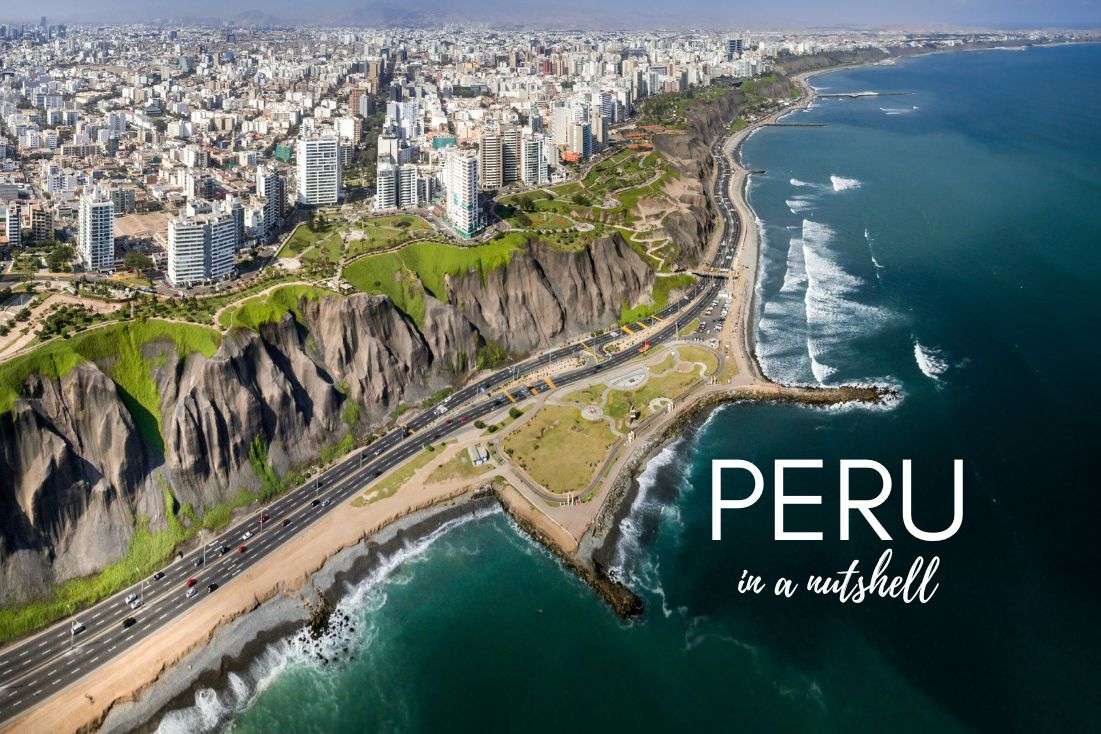
Can you guess which country has unique flora and fauna, historic legacy, mystical sights, diverse culture, and many beautiful places to visit? Ok, you clicked on the title, so you know already, and yes, it’s Peru! It's not just Peru's history and culture that are incredible, but even just reading about all those potatoes will knock your socks off!
This country is very attractive during the whole year. The weather is great and there’re so many things to do in Peru. Me and Karin had a wonderful trip there and would like to share our interpretation of facts to give you some background.
Perhaps you’re planning a trip to Peru, too? Check our our 2-week and 4-week itineraries!
Ready to learn more about this beautiful South American country? Let's dive in straight to some of the most interesting facts about Peru!
You might also be interested in reading:
- A Customizable 3–5 Day Cusco Itinerary
- A 2-Week Peru Itinerary: A Day-By-Day Trip Plan
- Top 14 Handpicked Luxury Hotels in Peru (With Prices)
- The 10 Best Ruins to Visit in Peru
- Top 9 Places to See in Sacred Valley
Peru Economy
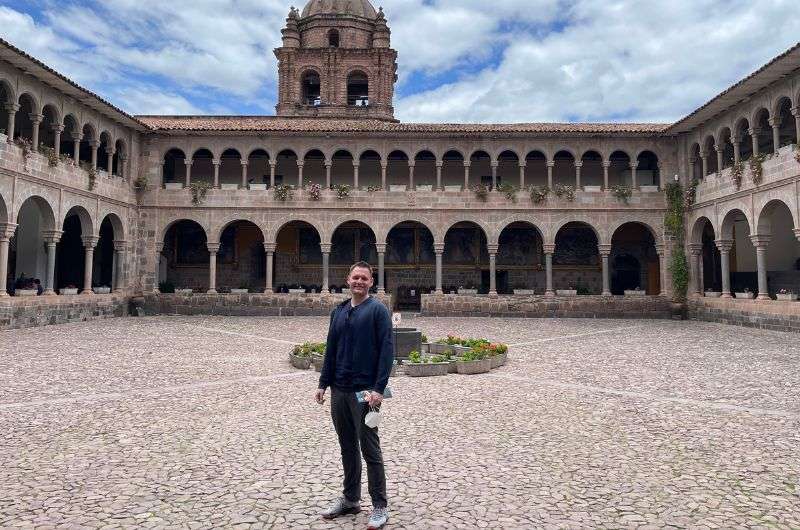
The Museum of Pre-Columbian Arts of Cusco
It may not look it, but Peru is one of the world's fastest-growing economies. Most of the trade and industries are located in Lima, but since the country also relies heavily on agricultural exports, regions across the nation benefit from it.
That said, the incompetence of the governments historically have resulted in stark economic inequality, corruption and crappy labor laws, which have benefited everyone that knows the right people and done nothing for the poorer people of Peru.
Read through the history of Peru below to get a better understanding of the unbelievable amount of turmoil in Peru’s government that is so obviously tied to the economic instability of the country.
Peru's main exports are copper, gold, zinc, textiles, chemicals, machinery and fish. The US, China, Brazil, EU and Chile are Peru’s best trade buddies, with established free trade agreements between them and Peru.
The country’s elite are big fans of the Lima Consensus which are a bunch of de-regulatory, far-right policies that aim to create a neoliberal economy. Among others, some of the policies cut social programs, resulting in further inequalities and worse access to education, justice and security for the majority of the regular population.
Peru Politics and Government
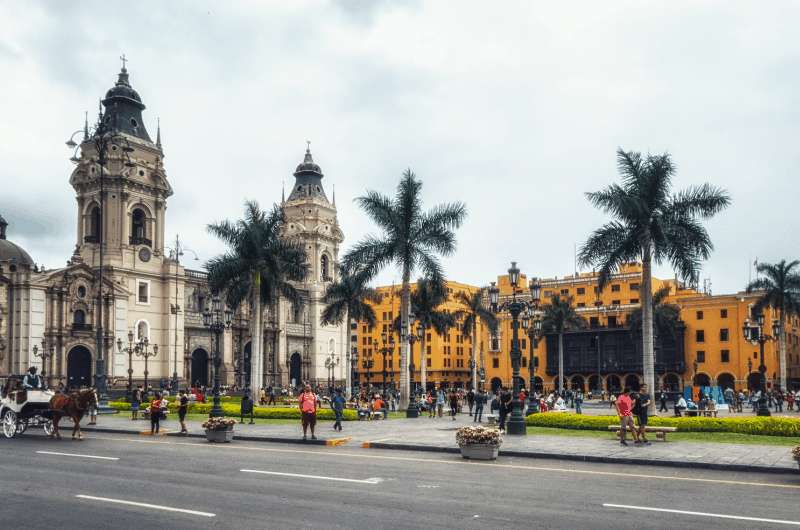
Plaza de Armas in central Lima
Peru is a constitutional republic with a president and a multi-party system. The president is head of state and head of government.
The path to Peru’s democracy has been lined with multiple military coups and numerous constitution changes, corruption, problems, and just overall chaos.
Until 2021, Peru has always been leaning towards the right. Current president Pedro Castillo represents the left wing, but he is always being investigated for corruption, has fueled many a protest due to rising prices. I guess there needs to be a third wing that’ll fix all the messes in the country. Don’t hold your breath though.
Interestingly, voting is mandatory from the time Peruvians turn 18 until they are 70 years old.
Peru’s 25 regions each have their own regional and local governments.
Progressive interesting fact about Peru: There is a law in Peru that makes it mandatory for women to take up at least 30% of the candidates on a party list, which has resulted in about ¼ of Congress seats being sat on by women. Unexpected, eh?
It's better not to talk to the locals about politics. It can be a touchy subject.
One of the many luxury hotels in the midst of Sacred Valley @ Tambo del Inka, a Luxury Collection Resort & Spa, Valle Sagrado in Urubamba
Our top tips about Peru:
- You won’t go hungry! Portion sizes are huge and the food is fantastic.
- Peru is huge. Plan on taking domestic flights to save time.
- Don’t hang around for too long: Peru’s capital, Lima, wasn’t our favorite. You can be done with it in a day and move on pretty quick. There is so much more to see! Check out our Peru itineraries.
- Can’t get enough? Read all of our top tips for visiting Peru in another article.
Peru Geography

On the trek to Rainbow Mountain
Peru is located in the west of South America. It shares borders with Ecuador, Colombia, Brazil, Bolivia, and Chile. The Pacific Ocean gives Peru 3,000 km (1,900 miles) of coastline full of totally useless beaches, at least for the sunbathing and swimming-type folks. This isn’t the Mediterranean. The water is just too cold for comfort, even in the summer, so don’t make Peru your beach vacation destination.
This is not to say the coastline isn’t pretty—we spent hours in Paracas National Reserve taking in the dramatic cliffs dropping down to the sea and were very enamored by them!
A narrow strip of land running down the country alongside the coast is almost all desert. The dunes provide a cool, albeit monotonous, view when you drive from Lima to the aforementioned Paracas. It also makes sandboarding a thing! Check out our article about all there is to do in and around Paracas to read about Peru’s sandboarding heaven, Huacachina.
Cheers from Karin! She’s enjoying her drink at the DoubleTree Resort by Hilton Hotel
Do you know another thing that you can do to take advantage of the beaches? Have cocktails on them while staying at the amazing DoubleTree Resort by Hilton Hotel in Paracas! Hands down one of our top hotel stays in Peru. You can also “rent” (for free) equipment like paddleboards and kayaks to explore the sea without getting too wet. We loved the experience.
You’ll find a completely different landscape in the north—the Amazon Rainforest. The Pacaya Samiria National Reserve is the place to experience it (just know that there are no roads into the gateway city—Iquitos).
Slicing Peru down the middle are the mighty Andes Mountains. This is where you’ll be picking your jaw up off the floor on every turn, especially in Sacred Valley and, of course, in Machu Picchu. To the east of the mountains the land turns into more jungle.
Given the variety of natural landscapes, Peruvians associate themselves with a particular region rather than the country as a whole.
Peru’s capital, Lima (decidedly not our favorite place), is about halfway down the coast of Peru, but for most visitors, it’s the most north they’ll get in the country. But remember you can venture out to some great and lesser known ruins if you dare to go north, not to mention the Amazon Jungle.
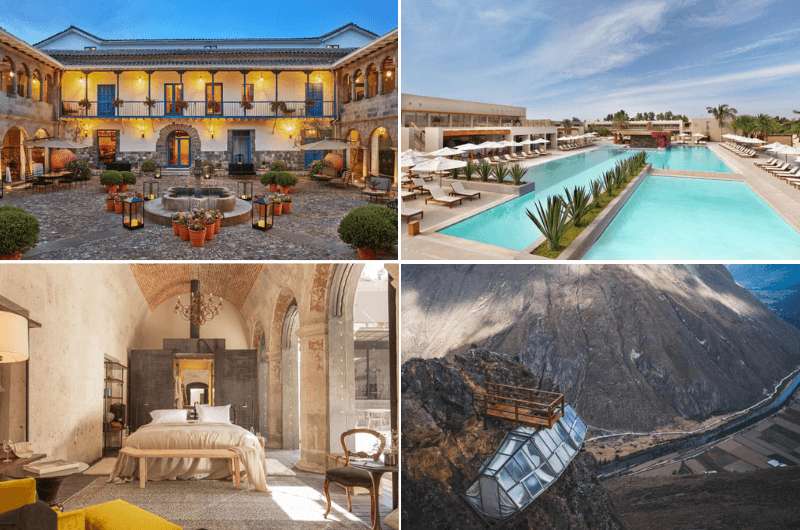
Some of our favorite luxury hotels in Peru, clockwise from top left: Palacio del Inka, A Luxury Collection Hotel by Marriott in Cusco, DoubleTree Resort by Hilton Paracas, Vertical Sky Luxury Suites near Ollantaytambo, and the CIRQA – Relais & Châteaux in Arequipa
Hotel tip: No matter where in the country you go, there’s a fantastic hotel experience available to you. We put together some of what we think are the best options in our best luxury hotels in Peru article. Some inspiration for you in the photo above.
Peru’s Climate and Weather
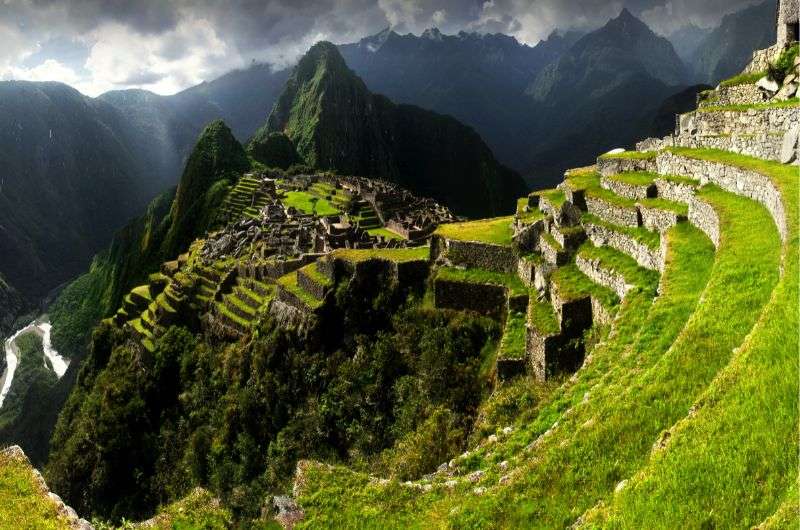
We have a specific article just about the best times of the year and day to visit Machu Picchu
Now let's talk about some facts about the weather in this megadiverse country. Have you ever heard of such a thing? There are 12 megadiverse countries in the world and Peru is one of them. Given its geographical diversity, there are so many species living within its borders it’s crazy. Peru is top 5 in the world based on how many different plants and animals live in it.
But wait that’s not all—Peru has the greatest climate range within a country in the world. There are 117 life zones that have been identified on our Earth, and Peru contains 84 of them. It’s like a miniature planet!
Peru’s seasons are divided into wet and dry rather than spring, summer, fall, winter. Still, it is important to realize that since this is the southern hemisphere (just barely!), summer is in the winter and winter is in the summer (unless you are also from the southern hemisphere). What exactly you should expect in terms of weather depends greatly on which geographical zone you are in.
The coast is usually dry, often foggy, and hot.
In the mountains, summer is the dry season, winter is rain season. Remember this is where you’ll find Machu Picchu, Cusco, Rainbow Mountain and Sacred Valley, so planning your trip around wet season is pretty important. Unless you’re us and you travel smack in the middle of wet season and get totally soaked at Machu Picchu within two minutes of a massive downpour.
You’re looking at temperatures around 20°C (68°F) year-round during the day, so not bad at all, and even if you do get wet, you won’t be freezing unless you’re on one of the more serious mountain treks.
Weather in the jungle is as you’d expect—either humid or very humid, rainy or very rainy, and always hot.
For more details about the weather in the various regions, check out our 39 Peru Travel Tips. All we have to say is—pack lots of layers!
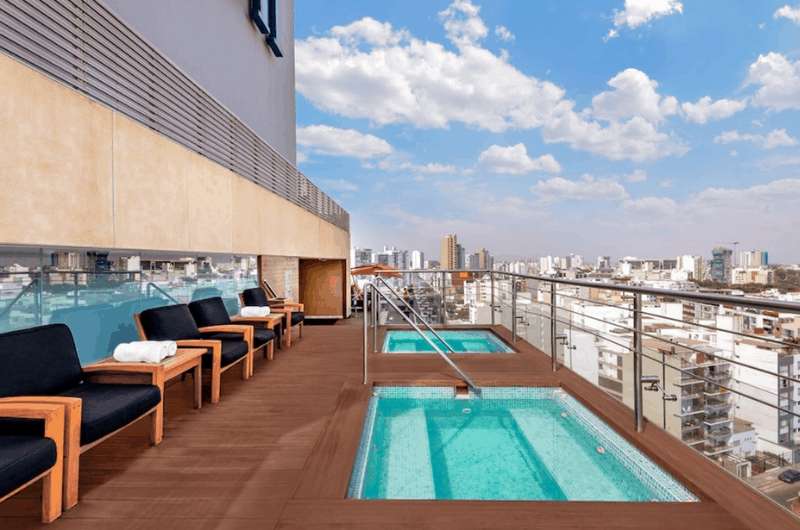
Hotels we love: Miraflores Hilton Hotel in Lima (see our Luxury Hotels in Peru article for more)
History of Peru
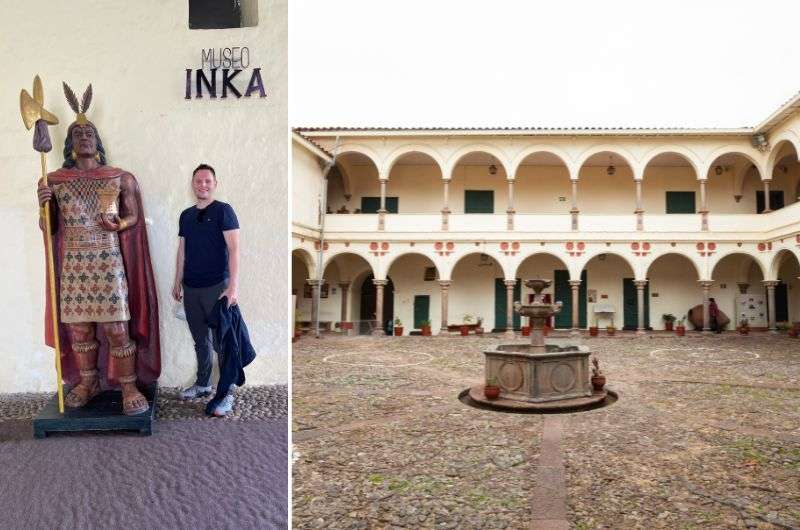
The Inca Museum in Cusco
Peru is one of the cradles of civilization, with the Norte Chico people considered the oldest civilization in the Americas, so saying the history of what is now Peru is long is a massive understatement.
I’ll refer you to an encyclopedia if you want to dig deeper into the history of humankind, but here on this blog, we’ll skip a few thousand years to 700 BCE when the first major desert society emerged—the Paracas culture. We have a bit more information about these mummy bundling, cranial deformation fans in our Paracas article (a must-do stop on your Peru itinerary, btw). They also weaved.
The first regional empire was established a couple hundred years later by the Wari people. They did cool things like start the highway network and put together an administrative system, all of which was later taken over by the Incas.
Fun fact: Did you know that the actual Lost City of the Incas isn’t really Machu Picchu? It’s the much more mysterious Vilcabamba. And it was none other than the Wari that built Vilcambama, not the Incas. It’s all very confusing and fascinating. See our Best Ruins in Peru article for more details.
Many other cultures emerged and then got swallowed by better, stronger cultures. Some of the notable ones are Nazca (click on over to our Nazca Lines article for more on them and their huge geoglyphs), Moche, and Chimu. The latter left behind the world’s second largest mud brick city, Chan Chan.
Tip: If you are a fan of ruins, check out our articles about Mexico’s best Aztec ruins or the top Mayan cities in Mexico (and where to watch out for armed muggings).
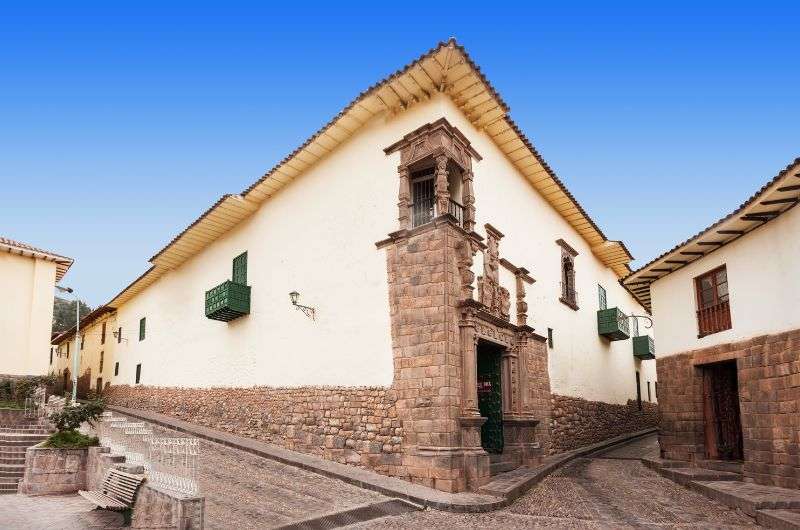
The Inca Museum in Cusco
One of the most powerful cultures that took over many of the existing cultures (but in a nice way, sort of) were the Incas. When they took over another tribe, they allowed its people to keep their way of life and traditions, while obviously making sure they stayed, one way or another, loyal to the Inca Empire.
The Inca Empire lasted from 1438–1532 and was based in Cusco, but extended way beyond Peru to parts of Colombia, Chile, Ecuador and Argentina. The Incas were a very advanced dynasty whose power and size could be compared to other prominent dynasties in history, like the Roman or Mongol Empires. The Inca Empire was the largest ever in the entire Americas. The official language was Quechua.
Travel tip: The entire Sacred Valley, which was the spiritual center of the Inca Empire, is full of Inca-related places of interest. See our list of the best places in Sacred Valley to find out what’s worth seeing. But mostly, don’t just go to Cusco and Machu Picchu and call it a day. Sacred Valley has some of the most spectacular scenery we’ve ever seen. (And the worst altitude sickness we’ve ever experienced!)
The Incas were known for their ingenious building and agricultural techniques. Terraces used as agricultural laboratories (such as those at Moray) or even used as salt pans (see Maras) with clever irrigation systems are fascinating to learn about. When you see the precise cutting of the stones used for building Inca structures, you’ll understand why they didn’t need to use anything to keep them in place, like mortar.
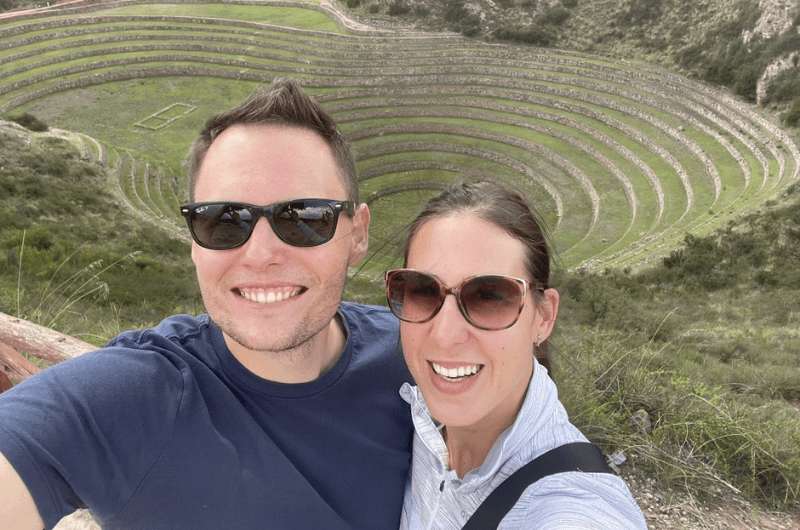
Me, Karin, Inca terraces at Moray
In 1531, the Spaniards started to flow into Peru, attracted by the riches and stories of the Inca Empire. Francisco Pizarro led the Spanish army and started the colonizing process. Cusco became a Spanish settlement, and many Incas were enslaved to take apart their own structures and use the material to build Spanish churches.
The Incas didn’t give up easily, but they were, in the end, defeated. Lima was established by the Spaniards in 1535, and it became not only the seat of Spanish royalty in Peru, but it had jurisdiction over most of Spanish South America. Nevertheless, the further away from Lima the harder is was for the Spaniards to stay in control, with the Incas resisting on every corner.
A trade route was established between Lima and Sevilla in Spain in order to export precious metals. Another route through Mexico served the Pacific.
With all this trade, the connection with Spain and Peru being the seat of everyone who meant anything in South America, Peru became a very wealthy country.
Not surprisingly, the American populations weren’t especially happy to be colonized by the Spaniards, and the beginning of the 19th century was marked by wars where they fought for their independence. Leaders of forces from several South American countries came together (financed by Chile) and began freeing themselves from Spanish rule.
Peru was proclaimed independent in 1821, though it took Spain until 1879 to recognize this independence. In denial much?
Alas, the neighboring countries also started to have disputes between each other, such as the War of the Pacific, which lasted from 1879 to 1884. While Peru was in it almost innocently in the beginning, with Bolivia attacking Chile first, it invoked its alliance with Peru and then all hell broke loose.
Everyone declared war on everyone and ended with Peru losing parts of its territory to Chile (like some of the Atacama region, which, quite frankly, is an amazing part of Chile to visit), not to mention widespread looting by Chilean troops. Peru’s relationship is quite cold towards Chile to this day.
After the war, a lot of rebuilding and reforming started to happen to try to get Peru back up on its feet. It didn’t help that in 1922 a treaty was signed with Colombia that ceeded a large portion of the Amazon to Colombia, granting them access to the Amazon River.
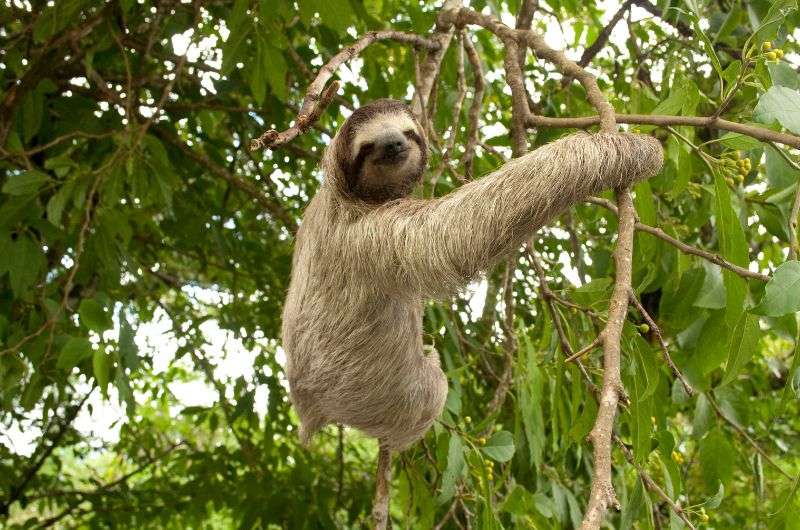
You, too, can visit the Amazon! Pacaya Samiria National Reserve is one of the best spots to visit in Peru and you can stay in a jungle lodge and meet these guys!
A large number of governments, mostly of socialist and far-left parties took turns trying to rule Peru, but were unsuccessful in turning things around for the country. Not surprisingly, repression and executions were not the path towards success.
After a brief push to limit military power in the government in the 1940s, a military coup resulted in a general becoming president, instilling popular social policies, but neglecting civil rights and allowing corruption to run wild. The dictatorship also did not bring Peru back to its long-lost status of success and power. How surprising.
With all the military involvement in Peru’s history, the nationalist programs that were rolled out did more damage than good. Narcotics trafficking became a problem and internal conflicts were rampant.
The 1980s in Peru were a time of economic turbulence. After some wins, like a couple of democratically elected presidents and the return of free speech, the negatives once again prevailed. The massive flooding caused by El Niño, hyperinflation and economic mismanagement, and rising social tensions lead to the formation and violent protests of the guerilla communist group called Shining Path.
Controversial president Alberto Fujimori ruled Peru from 1990 to 2000, during which he managed to drastically drop inflation rates, implement economic reform, privatize companies and set the stage for investments.
Sounds great, right? Well, all this also meant the devalued currency contributed to skyrocketing prices and people losing their jobs. People were not happy about that. Insurgent groups tried repeatedly and drastically to take over, resulting in atrocities committed by both sides.
Scandals and political turmoil were daily news. Fujimori ended up exiling himself to Japan to dodge human rights violation prosecution, as did his intelligence chief (he got arrested in Argentine).
The Toledo Administration, who took their seat in 2001, tried to restore democracy in Peru, and the presidents following all made some sort of effort to do good on Peru. But somehow, corruption, rebellions, impeachments and disappearing presidents just still managed to cause turmoil in Peru.
In July 2021, left-wing representative Pedro Castillo became Peru’s president. His position wasn’t easy, trying to save the country while battling the economic struggles caused by covid (Peru had a crazy high death rate) and now the Ukranian War.
Sure enough, mass protests began in March 2022 and lasted until April. Peru's situation is still far from stable and we’ll have to wait and see what happens next. Someone please pass the popcorn.
Languages in Peru
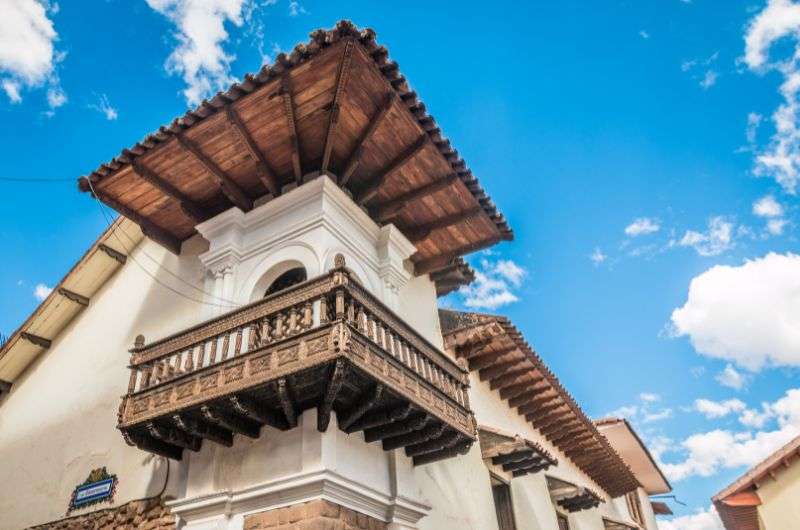
The covered wooden balconies in Cusco
There are about 50 different languages being spoken in Peru today, and that’s not counting the different dialects! Bonkers, rights? You wanted interesting facts, you got them!
The official language in Peru is Spanish, and, in the regions where they are prevalent, Quechua and Aymara also have official status.
About 80% of the population speaks Spanish, and most people in cities in the coastal region speak only Spanish. In the rural areas and areas away form the coast, most people are multilingual and you could have trouble speaking Spanish to them in villages. Cusco is considered the cultural hub of the Quechua.
Peru’s Quechua is considered the original form of the language. It’s also generally agreed that it was spoken more than 1000 years before the Inca Empire. Quechua itself is very diverse and has about 45 dialects!
English is clearly ignored by many people in Peru. Generally, anywhere that’s not Lima or Cusco will leave you feeling either very frustrated or entertained by just how little English is understood.
So, you won’t go wrong if you learn at least the basic phrases in Spanish like buenas tardes (good afternoon), por favor (please), gracias (thank you). And, of course, my personal favorite, una cerveza, por favor (one beer, please!)!.
But if you have trouble memorizing Spanish phrases and don't have a Google translator, you can always use your hands and legs language. Locals are really open-minded and will try to understand you. Besides, I promise, it's also very funny.
Peru Demographics
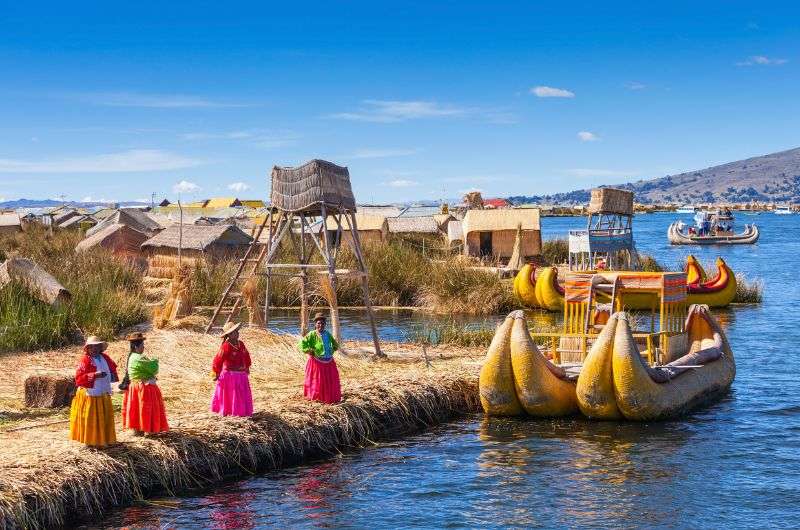
There are different ethnic groups in Peru, for example the Uros people of Lake Titicaca
Peru has a population of over 33 million. It consists of groups with different cultural backgrounds and characteristics, making it a multiethnic and multicultural country.
About two-thirds of Peruvians are so-called Mestizos, which are of a mixed indigenous and European ancestry (because when the Spaniards swooped in to colonize Peru, well, they multiplied).
One third are decedents or indigenous tribes, and a small percentage are citizens of European, Asian and African descent.
We noticed that, unfortunately, even in the 21st century in Peru there is a stratification of society along ethnic lines. For example, most members of the government or in high positions in companies are Europeans. Mestizos are more likely to do various administrative jobs or run small businesses. And the indigenous population is often involved in farming and just trying to survive.
But what are these 33 million people like, you ask? They’re awesome! More about what we thought of the people in our Peru travel tips article.
Peru Religion
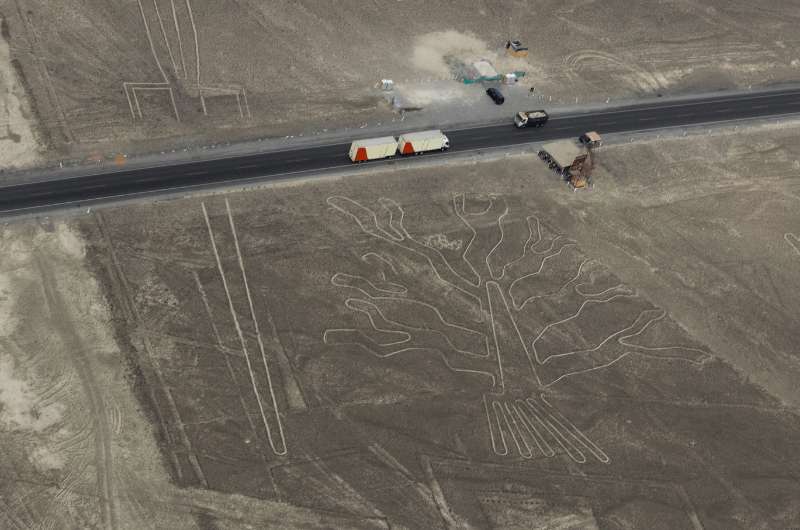
Some of the Nazca Lines in Peru, chopped in half by a road
The religious beliefs of Peruvians were influenced by Spanish colonization. The majority of the population has been Catholic Christians since the 16th century. The locals, on the other hand, used to follow a completely different religion.
A common feature of the local religions is the worship of many gods. In clever language, they used to follow polytheistic and pantheistic religions.
The most common idols were the Sun God and the God of Water. This can be seen by paying attention to the mystical Nazca Lines, which are located in the Peruvian desert. The images, according to most scholars, were placed on the ground as a gift for the gods.
As we told you earlier, there are many mestizos living in Peru. These guys combine not only the appearance of the European and the Aboriginal, but also religious and cultural features. Therefore, so-called syncretism (a local worldview with elements of Catholicism) emerged.
This is most noticeable if you look at religious holidays. For example, the indigenous festival Inti Raymi (dedicated to the Sun God) usually takes place on the feast days of Saints Peter and Paul. Another example is the association of the Peruvian Pacha Mama and the Christian Virgin Mary.
In general, Peruvians are quite religious people, and this is certainly reflected in their values. Family comes first, always.
Greetings in Peru
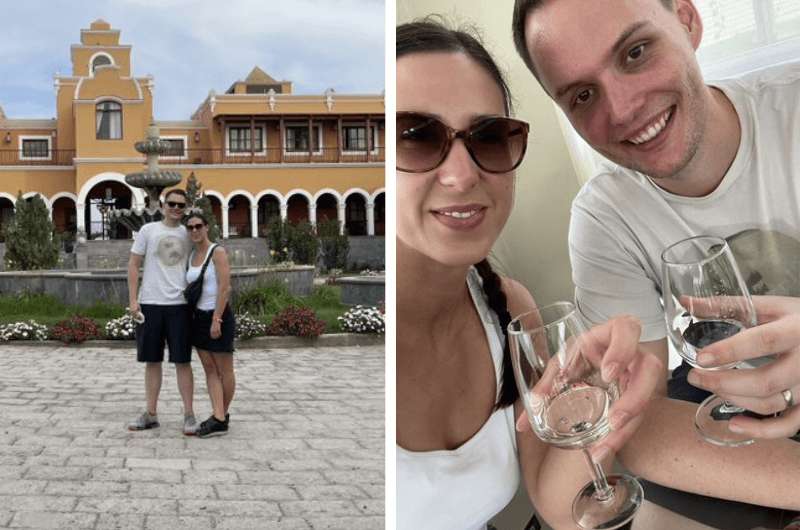
Pisco tasting, anyone? We bought a box of the stuff at La Caravedo, the oldest distillery in South America, because it was just so good. Want some too? Our Paracas guide has the details of our visit.
Like in many other countries, the most popular greeting in Peru is the handshake.
It is common to shake hands, just make sure you’re also staring your hand-shaking buddy in the eye. No eye contact, no friendship!
When greeting family and friends, Peruvians use what is called abrazo. This is a traditional greeting that includes a handshake and a hug among men and a kiss on the right cheek among women.
When addressing elders or just highly respected people, Peruvians as well as Spaniards use the forms Señor or Señora and the surname of the receiver. If we are talking to an older person, but with whom we have a less formal relationship, we can use Don and Doña along with the first name.
Professionals are usually referred to by their title. So, if you happen to have to deal with doctors, you can call them Doctor or Doctora.
This post may contain affiliate links. We earn a small commission if you make bookings through my links, at no additional cost to you. This helps us keep this blog free, thank you!
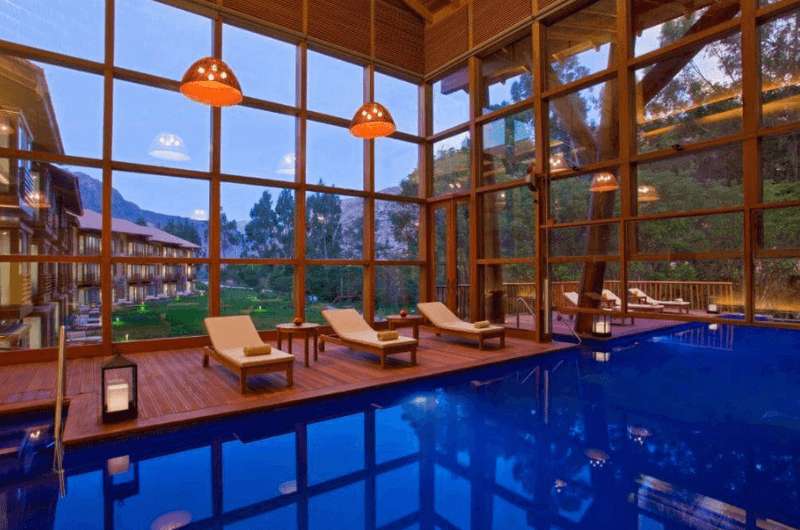
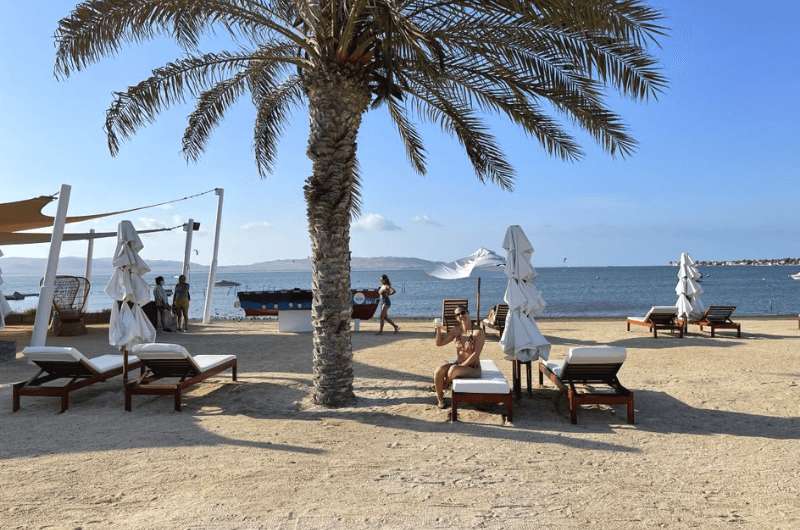
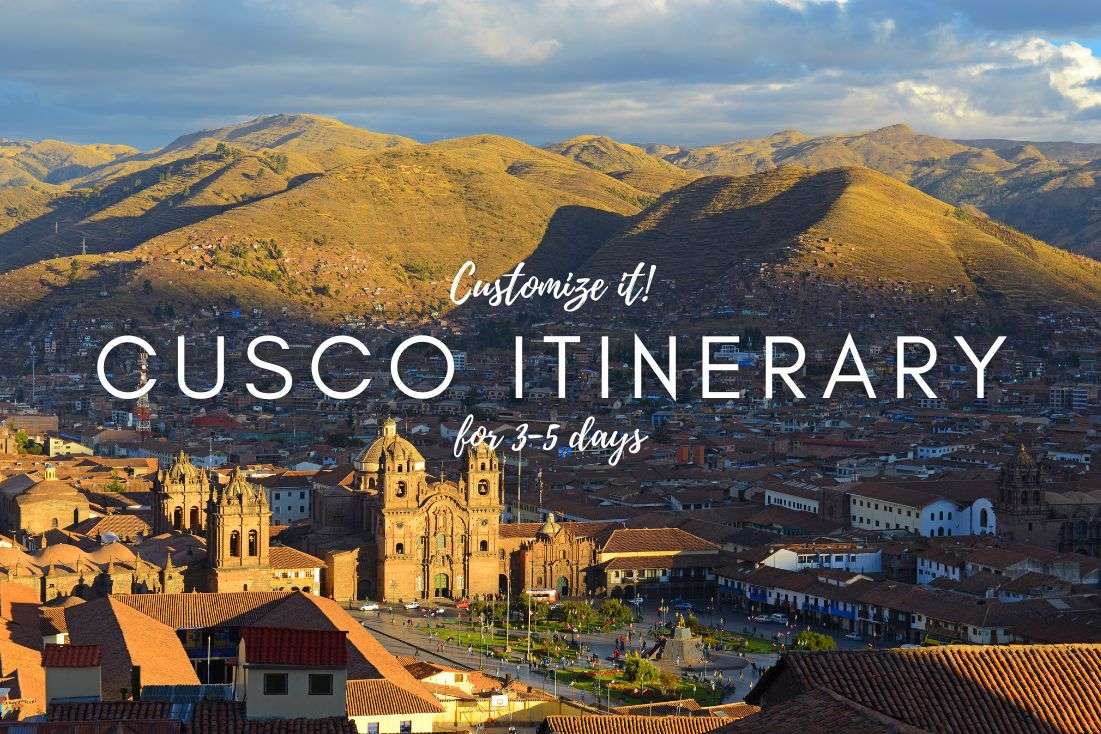
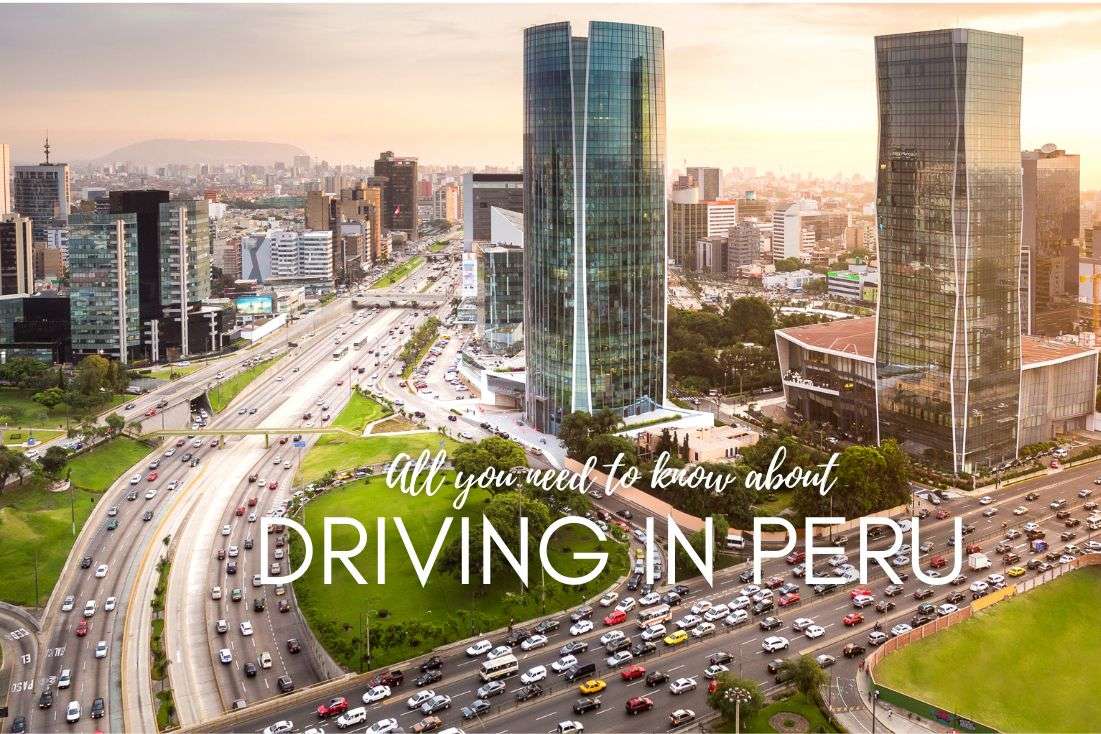
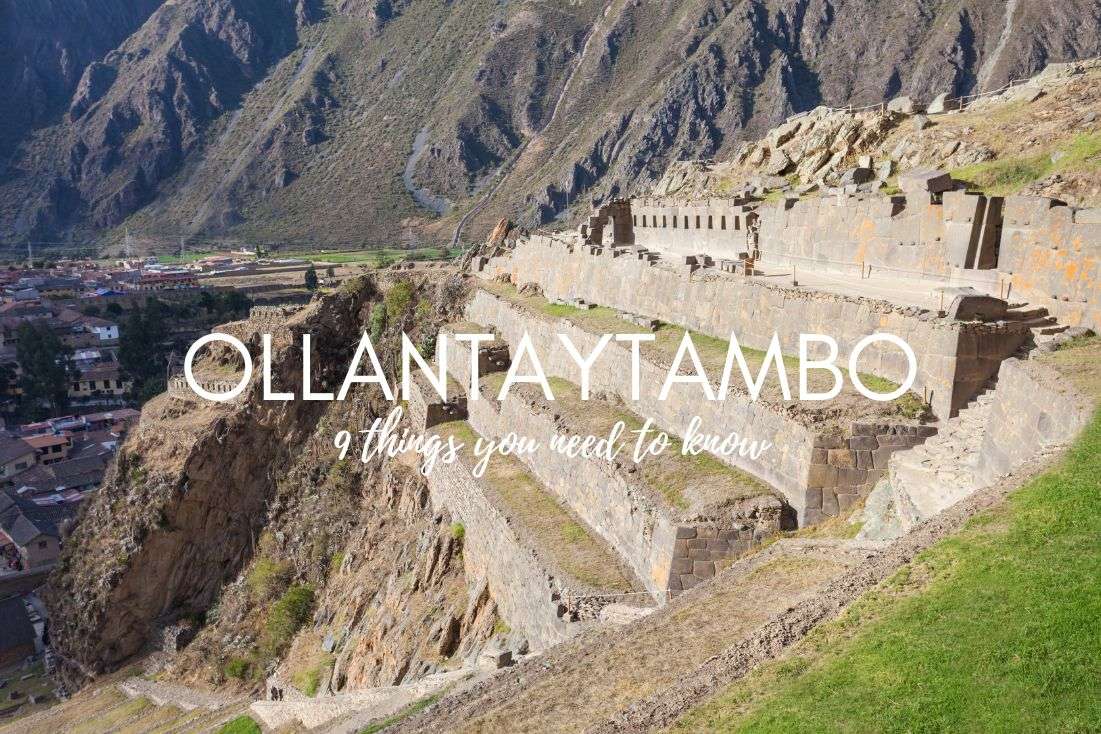




Comments
Thoughts? Give us a shout!